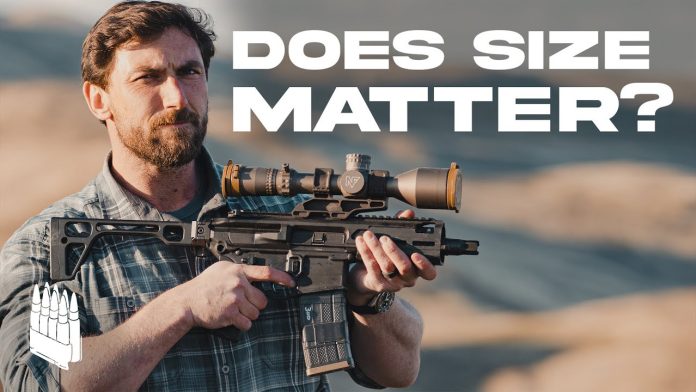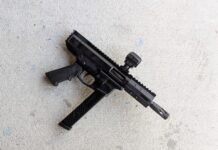
One of the hottest topics in the gun space for solid decade now has been barrel length. Especially barrel length when it comes to 5.56 and 7.62 NATO rifles. The Soviet 5.45 and 7.62 rounds also routinely enter this discussion and .300 BLK was developed as a solution to it in several respects.
In short, we love talking about the best size. All puns intended. (Watch the video, you’ll get it)
But, to use an overused phrase, mission drives gear. What I need the carbine to do will determine what barrel and therefore what size profile I need from the rifle. It’s among the reasons I am such a fan of the X95 is that it handles ways to solve the space equation without giving up muzzle velocity.
In the video, Mike and crew take as consistent a series of rifles as they could with different barrel lengths, all well optic equipped and triggered, and compares them. The goal is to make the barrel length, and therefore the three main factors that barrel length changes, the focus of the evaluation.
What are those three factors?
- Length, obviously.
- Weight, less obvious but critical to handling characteristics and accessories.
- External Ballistic Performance, via muzzle velocity.
External Ballistic Performance
This is fancy talk for projectile velocity, which is fancy talk for bullet speed.
Contrary to Fuddlore, a barrel isn’t more accurate because it is longer. So let’s knock out the External Ballistics commentary first. The 5.56, and all rifle rounds, derive much of their ability to affect a target from their velocity when they leave the barrel. They immediately start slowing down and “falling” in the sense that gravity takes hold. The lower the initial velocity, the smaller the distance window of influence on the target for optimum effects.
Colloquially 2,000 feet per second is the magic number where 5.56 drops from good terminal performance to “ok” terminal performance. So the further we can keep the round above 2,000 fps by starting it faster, the longer distance I can take a shot with good effect.
Under that consideration and that one alone, the M16 (20″ barrel) would be an ideal choice. In many respects it is a very good choice still. The addition of ambi-controls, floated barrel, and an adjustable stock do balance some of the space and performance considerations. But in several use cases it is still too long.
But as we cut barrel we cut speed, and it gets more severe the shorter we go.
Weight and Length
Weight isn’t so much an issue as a standalone, it will be in a range and also accessory dependent. However the balance and mobility of smaller guns adds some endurance benefits.
The major factor in size is in space management and navigation. The worst part of having an M16 wasn’t weight or the fixed stock, although that was less than ideal, it was the fact it was a pain in the ass to get in and out of a truck with. You certainly couldn’t manage it from inside a vehicle. It was also suboptimal moving through interior spaces. You could do it, but a shorter gun (like an X95) is dramatically easier to manage.
This is why solicitations for a rifle can get so long winded and text heavy. Rifles, or any service weapon, not only need to function but fit the space they work in. There will be space restrictions, ammunition restrictions, performance envelopes, likely threat parameters, maintenance requirements, and more all wrapped up into a solicited service weapon.
Like in all things, it is a balance. What are your priorities. If the ability to get the gun into an out of a vehicle or in use while in a vehicle in the seated position is a concern, it will have sizing requirements based on your vehicle fleet. If the ability to penetrate certain materials at certain distances is a requirement, it will have an ammunition and a velocity requirement which ties directly to the barrel. If the ability to mount certain aiming modules/optics and use with NODs is a requirement, again things are changing. The same thing applies to suppressors and what type of suppressors.
The job drives the tools. Barrel length is a core component that is shaped by the job parameters.



